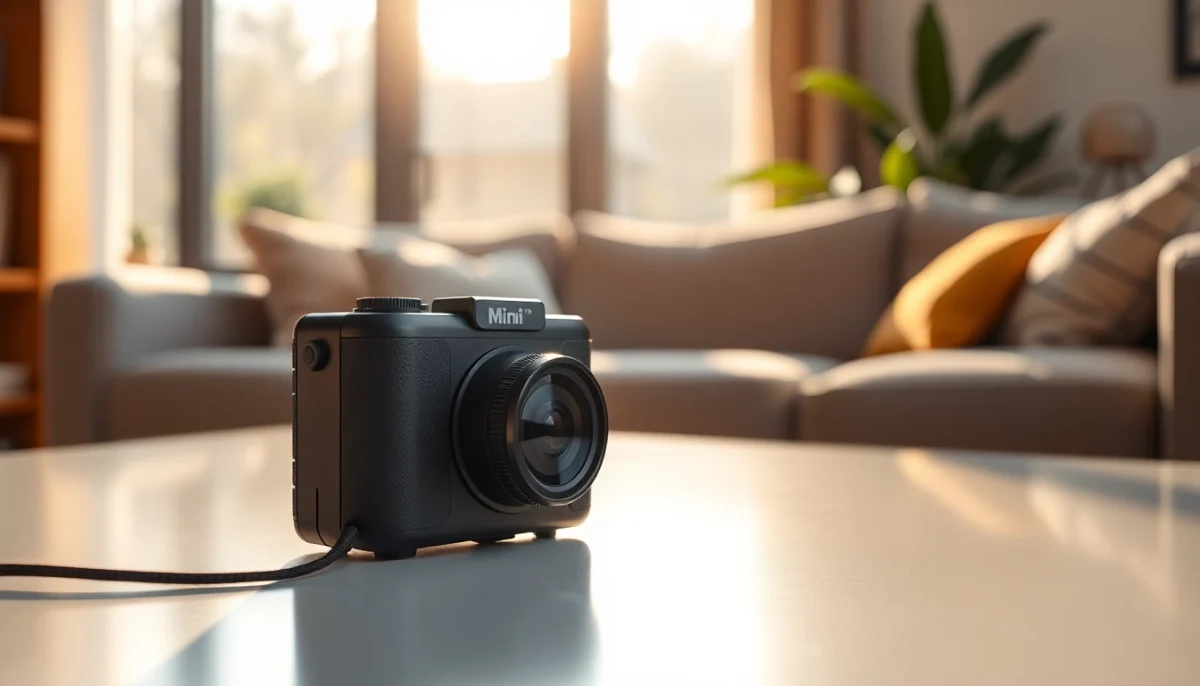Understanding Mini Caméras: Features and Uses
In today’s fast-paced digital world, capturing moments with portability and convenience is more important than ever. Enter the mini caméra, a compact device that merges advanced technology with user-friendly design, allowing anyone to record video or take pictures on the go. Known for their versatility, these cameras have gained tremendous popularity, making them essential tools for both amateurs and professionals. This article will unearth the myriad features, applications, and buying considerations related to mini caméras.
What is a Mini Caméra?
A mini caméra is a small, portable camera that is designed to easily fit in the palm of your hand. It employs advanced technology to ensure high-quality image and video capture while being lightweight and discreet. These cameras can come equipped with various features, including HD recording, night vision capabilities, motion detection, and even Wi-Fi connectivity, making them suitable for a wide variety of uses, both casual and serious.
Common Features of Mini Caméras
When shopping for a mini caméra, it’s essential to be aware of the common features that can enhance your recording experience:
- HD Recording: Most mini cameras come equipped with high-definition recording capabilities (up to 1080p or higher), ensuring clear and detailed footage.
- Night Vision: Many models support night vision technology, enabling recording in low-light conditions and enhancing security applications.
- Wi-Fi Connectivity: This feature allows for real-time streaming and remote access, letting users control the camera through their mobile devices.
- Long Battery Life: Compact design does not compromise battery performance, with many models offering extended recording times.
- Built-in Storage Solutions: Some mini caméras come with internal memory or the option to add microSD cards for increased storage capacity.
Typical Use Cases for Mini Caméras
The versatility of mini caméras allows them to be utilized in various scenarios:
- Surveillance: Perfect for home security or monitoring premises discreetly.
- Travel and Vlogging: Ideal for capturing travel memories without carrying bulky equipment.
- Sports and Action Recording: Many adventurers and sports enthusiasts use mini cameras to document their activities.
- Documenting Everyday Life: Due to their compact size, they make excellent devices for capturing genuine moments without disruption.
Buying Guide: How to Choose the Best Mini Caméra
Choosing the right mini caméra can feel overwhelming with a plethora of models available in the market. Below are some crucial factors to consider to help guide your purchase.
Factors to Consider When Selecting a Mini Caméra
Before purchasing, consider the following:
- Resolution: Higher resolution translates to better video quality, especially when capturing fine details.
- Field of View: Evaluate the camera’s lens specifications to determine the coverage area it can record.
- Batteries: Check battery specifications to ensure you get a model that can meet your recording needs.
- Mounting Options: Consider how and where you plan to use the camera. Look for models that offer optional accessories like mounts and tripods.
Comparing Different Models of Mini Caméras
It’s always beneficial to compare different models against each other. Reading reviews, watching product comparisons on platforms like YouTube, and checking customer testimonials can provide deeper insights into performance.
Budgeting for Your Mini Caméra
While the price range for mini caméras can vary widely based on features and brand, it is essential to identify how much you are willing to invest. Assess your needs against the camera’s features. A higher price doesn’t always guarantee better quality, so prioritize essential features within your budget.
Setting Up Your Mini Caméra
Once you’ve acquired your mini caméra, setting it up properly is vital for optimal use. Here’s a step-by-step guide that simplifies the process.
Unboxing and Initial Setup Steps
Your mini camera will likely come with various accessories in the box, such as a manual, charger, and mounting hardware. Begin by reading the instruction manual to fully understand the basic functions and components. Charge your camera completely before the first use.
Connecting Your Mini Caméra to Wi-Fi
Many modern mini caméras come with Wi-Fi connectivity. Follow these steps to set it up:
- Turn on the camera and navigate to the settings menu.
- Select the Wi-Fi option and make sure your mobile device has a stable internet connection.
- Choose your Wi-Fi network, input the required password, and connect.
Configuring Advanced Settings for Optimal Use
After connecting to Wi-Fi, delve into advanced settings like motion detection, notification settings, and resolution adjustments. Customizing these settings will help enhance your recording experience based on your specific use case.
Legal Considerations for Using Mini Caméras
As you start to use mini caméras, understanding the legal boundaries is essential to ensure compliance and respect privacy laws.
Understanding Privacy Laws Related to Mini Caméras
Laws governing the use of cameras can vary significantly based on your location. In general, it is illegal to record individuals where there is a reasonable expectation of privacy, such as in bathrooms or private spaces without consent. Always explore local laws before setting up your camera.
Best Practices for Ethical Use
Utilizing your mini caméra ethically involves more than just adhering to laws. Approach usage with respect and honor the privacy of others. Consider informing individuals that they are being recorded, especially in shared spaces.
When and Where Mini Caméra Use is Permissible
Permissible use typically involves areas where recording can be expected, such as your own home or private property. Additionally, many people use these cameras in public spaces where there is no reasonable expectation of privacy, like parks or streets.
Maximizing the Benefits of Your Mini Caméra
To make the most out of your mini caméra, consider the following tips and tricks that enhance quality and usability.
Creative Ways to Use Your Mini Caméra
Think outside the box! Here are some unique ways to leverage your mini caméra:
- Use it as a time-lapse camera during events like settings for home improvement.
- Capture candid moments by positioning the camera unobtrusively during gatherings.
- Utilize it for training or reviewing sports techniques.
- Implement creative storytelling by shooting a series of clips from different perspectives.
Tips for Capturing High-Quality Footage
For best results, consider these practical tips:
- Invest in a stabilizer or tripod to avoid shaky footage.
- Always check your camera settings before shooting.
- Keep lighting conditions in mind; avoid overly bright or dimly lit environments.
- Experiment with angles and perspectives to add variety to your footage.
Maintaining Your Mini Caméra for Longevity
Proper maintenance can extend the lifespan of your camera. Follow these simple steps:
- Store the camera in a protective case to avoid damage.
- Clean the lens regularly with a microfiber cloth.
- Check for software updates and apply them to enhance features over time.

